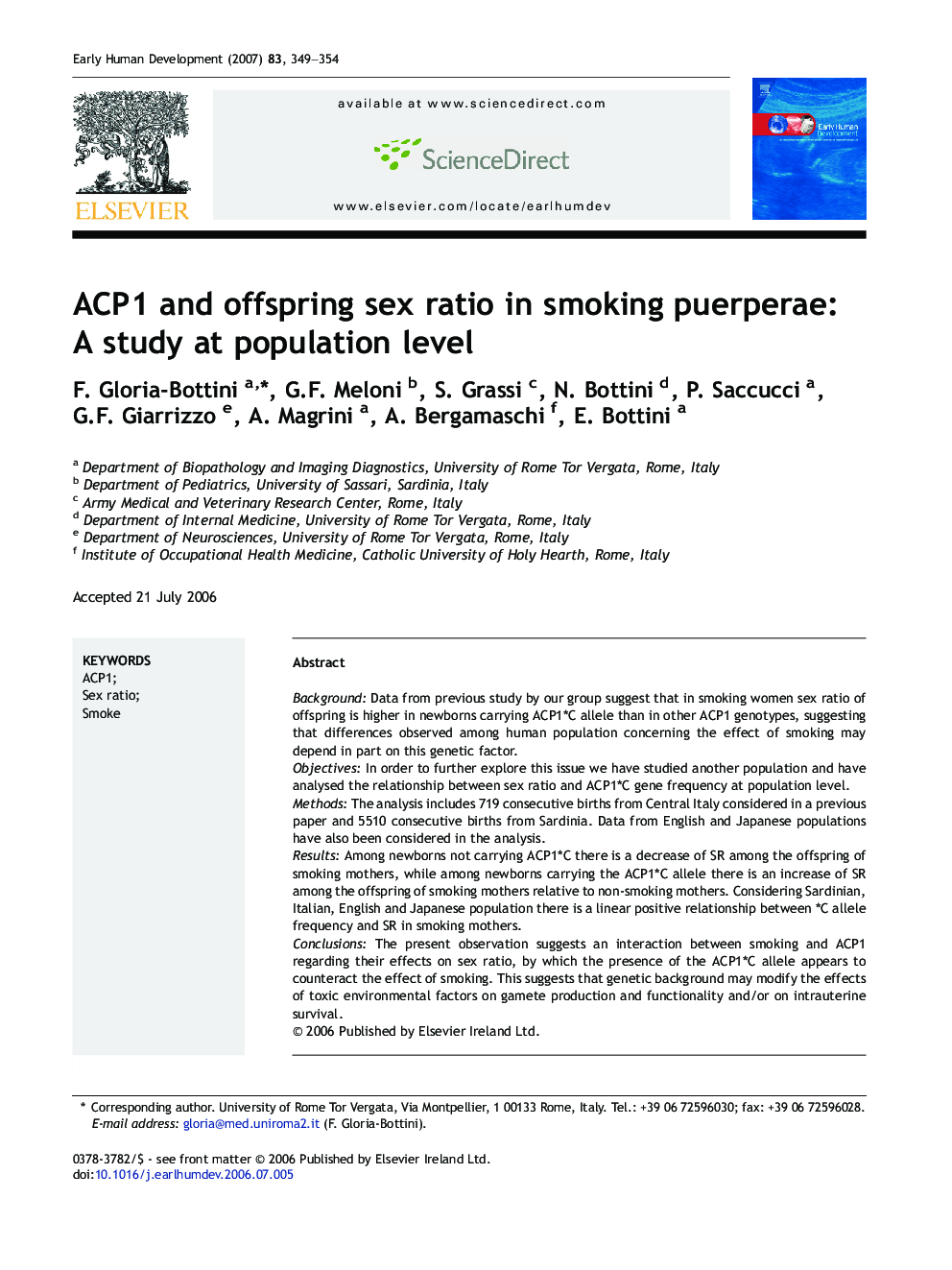| Article ID | Journal | Published Year | Pages | File Type |
|---|---|---|---|---|
| 3917718 | Early Human Development | 2007 | 6 Pages |
BackgroundData from previous study by our group suggest that in smoking women sex ratio of offspring is higher in newborns carrying ACP1⁎C allele than in other ACP1 genotypes, suggesting that differences observed among human population concerning the effect of smoking may depend in part on this genetic factor.ObjectivesIn order to further explore this issue we have studied another population and have analysed the relationship between sex ratio and ACP1⁎C gene frequency at population level.MethodsThe analysis includes 719 consecutive births from Central Italy considered in a previous paper and 5510 consecutive births from Sardinia. Data from English and Japanese populations have also been considered in the analysis.ResultsAmong newborns not carrying ACP1⁎C there is a decrease of SR among the offspring of smoking mothers, while among newborns carrying the ACP1⁎C allele there is an increase of SR among the offspring of smoking mothers relative to non-smoking mothers. Considering Sardinian, Italian, English and Japanese population there is a linear positive relationship between ⁎C allele frequency and SR in smoking mothers.ConclusionsThe present observation suggests an interaction between smoking and ACP1 regarding their effects on sex ratio, by which the presence of the ACP1⁎C allele appears to counteract the effect of smoking. This suggests that genetic background may modify the effects of toxic environmental factors on gamete production and functionality and/or on intrauterine survival.
